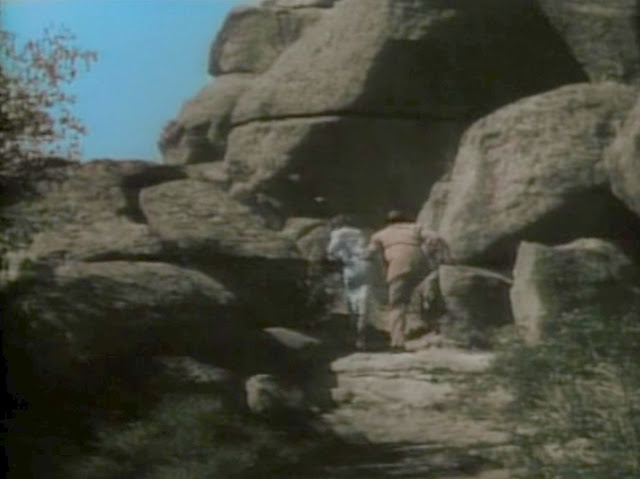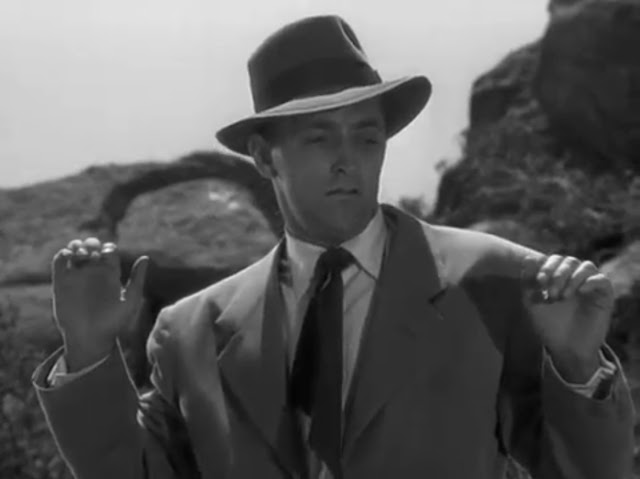John Ford's appreciation for the Iverson Movie Ranch in Chatsworth, Calif., as a filming location never got as much publicity as his love for Monument Valley on the Utah-Arizona border — where he created a series of film images that became emblematic of the American West. But he was a regular at Iverson, directing some of the most important productions shot at the ranch and skillfully interweaving Iverson's rocky terrain with images filmed elsewhere to create a richer and more complex library of Western imagery. I have always considered him an important member of the Iverson "family," and I wanted to celebrate the release of Ford's new U.S. postage stamp.

Here it is — the new John Ford "forever" first-class stamp, depicting a scene inspired by "The Searchers" along with a rendition of the director. The movie scene appears to be based on the film's opening sequence, with Monument Valley in the background and a figure presumably inspired by John Wayne in the foreground. Wayne, by the way, was another Hollywood legend who worked at Iverson a time or two.
The Ford stamp is part of a set of four new stamps honoring American directors, including Frank Capra, Billy Wilder and John Huston. The set is officially designated the Great Film Directors (Forever) stamps by the U.S. Postal Service, and you can buy them now from usps.com.
The John Ford stamp continues a tradition of U.S. postage stamps celebrating the American West, including the above Sitting Bull stamp. Blogger Bennett Owen, inspired by the announcement last year of the Ford stamp, put up a nice post rounding up some of the most compelling Western-themed stamps over the years, which you can read by
clicking here. I'll go ahead and post a few more of the images below, because they're mighty cool. Here you go ...
While Ford didn't shoot "The Searchers" at Iverson, his Iverson filmography includes some terrific movies. Among them:
"Stagecoach" (1939), often called the quintessential American Western. I did an extensive blog post on "Stagecoach" some time ago,
found here, which breaks down the Iverson filming locations seen in the movie. You can find more about "Stagecoach" in various places throughout the blog by clicking "Stagecoach" in the long alphabetical index on the right side of the page, or by
clicking here. One note about "Stagecoach" that I didn't mention last time is that the first appearance of John Wayne in the movie — an introduction that has been cited as one of the best ever for a screen actor — was created using a composite of Monument Valley footage and Iverson Movie Ranch footage. The stagecoach is seen traveling through scenery that is mostly Monument Valley with a little Iverson in the mix, but when the camera settles in on Wayne during his first encounter with the stage, the rocks seen behind him are at Iverson.
This screen grab from the John Wayne entrance sequence in "Stagecoach" is from a colorized version of the movie, although the movie itself was shot in black and white.
Another frame from the same sequence, but in the original black and white. The rocks behind Wayne were found in the Upper Gorge on the Iverson Movie
Ranch, and for the most part were destroyed in the late 1980s to make
way for condos.
"Wee Willie Winkie" (1937) — This Shirley Temple war movie (anti-war, really) about the
British colonization of India was an important project in its day, and John Ford shot it
largely at Iverson. The production included the building of elaborate
sets at the movie ranch, and some of that construction became the foundation for
other sets that remained in use throughout much of the filming era at Iverson.
Victor McLaglen and Shirley Temple at work on the Lower Iverson in John Ford's "Wee Willie Winkie." The movie comes up regularly on this blog, and you can read more about it by
clicking here (or by looking up "Wee Willie Winkie" in the alphabetical index at the right side of the page).
Here's a promo still from "Wee Willie Winkie" that provides a good look at part of the elaborate "India fort" set built for the movie on Sheep Flats, on the Lower Iverson. The picture is courtesy of movie location expert Jerry England and his great blog, "A Drifting Cowboy," which you can read by
clicking here.
"The Grapes of Wrath" (1940) — John Ford's definitive movie on the westward migration during the Dust Bowl is one of my favorite movies of the 1940s.
The movie only contains a little bit of Iverson — mainly the above shot, which looks out on the San Fernando Valley from Iverson. At that time the Valley was still mostly farms, and the shot depicted the migrant family's first look at California's rich farmland — farmland that held the prospect of jobs in the field.
Click here for more about this shot and about "The Grapes of Wrath."
The above links can be used to shop for John Ford's Iverson movies on Amazon.






























